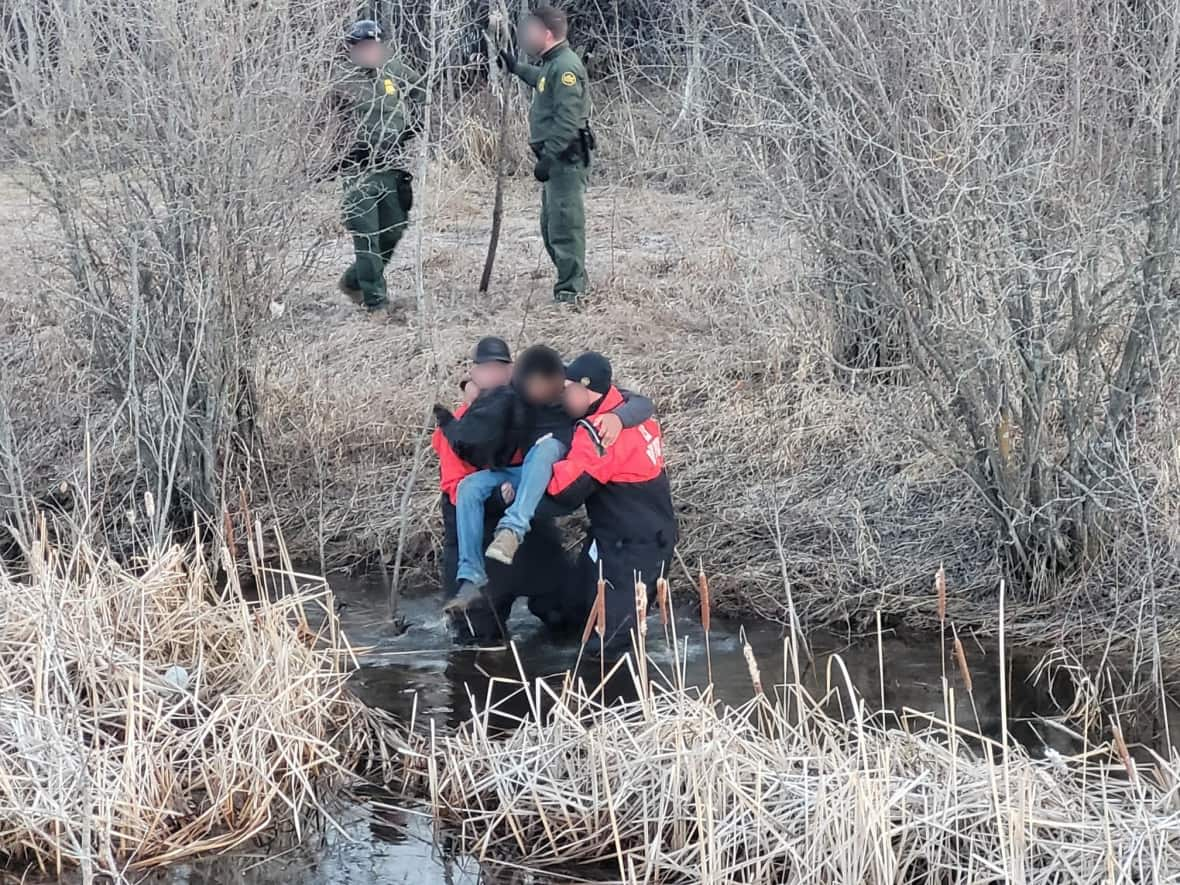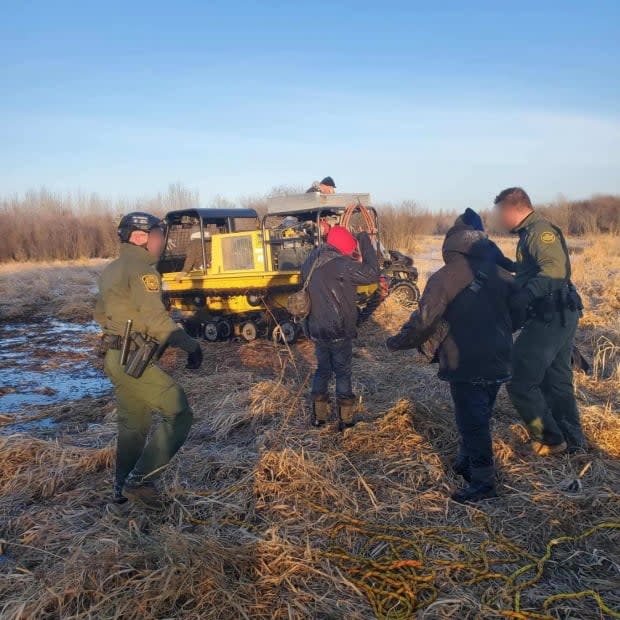U.S. reports sharp rise in number of illegal border crossings from Manitoba

The number of people caught crossing the border illegally from Manitoba into the United States rose sharply over the past six months, according to data from U.S. Customs and Border Protection.
From October to March, the U.S. Border Patrol encountered 100 people who crossed the Canada-U.S. border from Manitoba into North Dakota or Minnesota.
That did not include nine men rescued from a wetland west of Warroad, Minn., on Tuesday after they crossed illegally into the U.S. from southern Manitoba.
The October-to-March tally exceeded the total number of illegal border crossers encountered by U.S. authorities for the entire previous year.
A total of 81 illegal crossings were logged from October 2021 to September 2022, according to U.S. Customs and Border Protection.
"The first half of the year we've already surpassed all of our numbers from 2022, and we're a little over halfway through now," said David Marcus, a border patrol agent with the Grand Forks Sector, which covers the North Dakota and Minnesota section of the U.S. border.
"They're desperate to try and better themselves, better their families. And the reason for going through the northern border versus the southern border is I think some people think it's going to be easier.
"I could say that's not the case. We have a lot of challenges up here, a lot of environmental factors that can be a huge risk to somebody's livelihood."

Right now, migrants who try to cross the border outside of a regular entry point face the prospect of cold and wet conditions. Marcus said migrants are often ill-prepared to navigate flooded areas such as the wetland where the nine men were rescued on Tuesday.
Just before 5 a.m., the RCMP received an emergency phone call from one of the members of the group, all of whom were men, aged 19 to 46, U.S. officials said.
The Mounties called U.S. emergency agencies and the U.S. Border Patrol, who found the men suffering from hypothermia in a flooded bog.
The rescuers needed special equipment to reach the group and waded in with drysuits to protect themselves from the frigid water.
All nine men were treated for exposure. One had to be airlifted, the U.S. Border Patrol said.
Seven of the men were from Mexico and all nine were deemed to have crossed into the U.S. illegally, the Border Patrol said.
"Seven of the migrants were processed and transferred to the custody of Immigration and Customs Enforcement, while the other two migrants continue to receive medical care because of their exposure to the elements," the agency said in a release.
American officials praised the response of Canadian police and emergency workers.
"The outcome could have been much worse if not for the quick notification from RCMP and the response of our agents," Chief Patrol Agent Scott D. Garrett said in a statement.

The incident occurred more than a year after a family of four from India froze to death trying to walk south across the border near Emerson, Man.
Last month, Canada negotiated a deal with the U.S. to allow Canada to turn away migrants coming north at irregular crossings.
Alastair Clarke, a Winnipeg immigration lawyer, said that change likely inspired more migrants to attempt to cross the border in a clandestine manner.
"We knew that individuals are going to be forced to take increasingly dangerous, increasingly risky paths to cross the border and so these tragedies were unfortunately entirely predictable," Clarke said in an interview on Tuesday.
Canada and the U.S. ought to consider increasing the legal ways migrants can enter both countries, said Shauna Labman, the Director of the University of Winnipeg's Global College.
"When we limit legal pathways, when we make access to our countries more and more difficult to achieve, what you're doing is creating more space for smugglers and traffickers to thrive," Labman said in an interview.
"They've got more interested people willing to take the risks and engage with them, and so we're creating the opposite of what we want. We're creating more clandestine entries into our countries."


